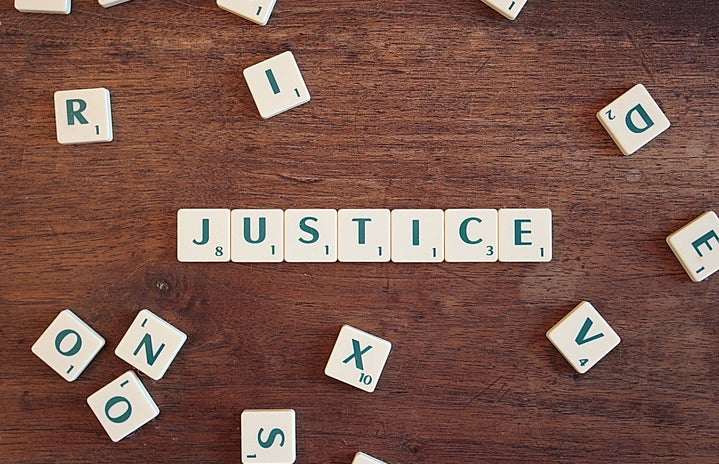Trigger Warning: Discussions of Graphic Racist Violence
In the past, anti-Asian discrimination and violence have been unknown to or dismismissed by many. However, the ongoing spike in anti-Asian violence has recently drawn the public’s attention to a string of stomach-turning videos that have surfaced on social media. Last month, San Francisco surveillance footage captured an unprovoked and fatal attack on an 84-year-old Thai man who was on his morning walk. Within the last couple of weeks, a 61-year-old Filipino man was slashed across the face on the subway in Manhattan. In Queens, an elderly Asian woman was called multiple racial slurs before she was shoved to the ground.
“The reality is many of these [stories] involve videos where you see direct, violent attacks on elders. And so when you see that, there’s a visceral reaction — that I think all of us rightfully have — to seeing someone that is very vulnerable in our society getting attacked in this senseless and tragic manner,” says John Yang, President and Executive Director of Asian Americans Advancing Justice (AAJC). “It’s understandable that we want to focus on this now. We also need to keep our focus even when there aren’t these videos, even when there isn’t that one single incident that brings it out.”
Yang adds that although the violence has been a significant problem this year due to the Coronavirus, “historically, going even further, it’s always been a problem that the Asian-American community has had to deal with.”
The roots of anti-Asian sentiment in the U.S. can be traced as far back as the concept of “yellow peril” and the Chinese Exclusion Act that treated Asian immigrants as threats to national security in the 1880s. But they resurfaced on a large-scale level last year, after reports traced the origins of the Coronavirus to China. According to the organization Stop AAPI Hate, from March 19 through Dec. 31, 2020, 2,808 firsthand reports of anti-Asian hate incidents were collected from 47 states and the District of Columbia. Of the reported incidents, 7.3 percent of the reports counted elderly Asians as the victims.
Asian Americans Advancing Justice (AAJC) co-founded its own anti-hate initiative called StandAgainstHatred.org in response to racist rhetoric during political campaigns in 2016. Yang says their website receives more reports now than it did when it was first created.

“There’s probably a couple of different root causes [of recent attacks, and] I wouldn’t attribute it to any one thing,” he says. “First and foremost is we had a former president that conditioned communities to be phobic and to be anti-Asian. And he did it through rhetoric around this awful ‘Chinese virus’ or ‘kung-flu,’” Yang explains. “And so we had a situation where people saw the Asian-American community as ‘other,’ as a different community, and frankly, as a disease-carrying community. So that is certainly one cause. But the other cause is the economic insecurity that a lot of people face. We have to look at this in the context of COVID-19, what people are feeling economically, and the fear that people feel.”
The Asian-American community is under attack, particularly the vulnerable elderly. These horrifying incidents of senseless violence and harassment have started a crucial conversation on Anti-Asian violence. Both allies and Asian Americans are responsible for continuing the dialogue with substantive action. Here are some ways to combat anti-Asian violence:
Educate Yourself
It is important to recognize that anti-Asian violence and xenophobia are not new. There was the 1882 Chinese Exclusion Act, the 1887 Snake River Massacre, the murder of Vincent Chin in 1982, and much more. Learn about the long history of Asian Americans, and the adversities they’ve faced along the way.
Watch PBS Asian Americans, a five-part docu series about different aspects of the Asian American experience.
Read this article about the history of anti-Asian legislation in American history.
Learn about the diversity of Asian cultures and the unique socio-economic issues within each community.
Volunteer in Your Community
The Oakland Chinatown Coalition created a volunteer-based community safety program to check in on community members, local businesses, and clean up trash in the area. New York City has a similar program called Chinatown Block Watch. Remember the safety and resource needs can vary from city to city — seek out your local Asian community center and ask if they have a volunteer program.
Other members of the East Bay community have taken further action. Working with researchers at the University of California, Berkeley, the Anti Police-Terror Project compiled a memo of community safety programs best suited to protect residents in Oakland’s Chinatown as part of an effort to revive the Chinatown Ambassador Program. Compassion in Oakland, a group founded by Latino activist Jacob Azevedo, has more than 300 volunteers to escort fearful elders on walks and errands around the neighborhood.
Start an Inter-Community and Inter-Racial Dialogue
It’s important, Yang stresses, to be “having these conversations not only within the Asian community [and] making sure Chinese Americans are talking to Indian Americans, are talking to Vietnamese Americans. But then expand that out — talking to the Black community, the Latino community, too,” he says. “Because the bottom line is, we’re all in this together. And if we all feel that connective thread, that connective tissue, that’s what’s going to lead to longer-term solutions, longer-term protection of all of us during this environment.”
Sign Petitions
Sign and share these petitions to raise awareness and stop anti-Asian racism:
– Get mainstream news coverage of national elderly Asian American assaults
– Provide safety ambassadors & prevent hate crimes against elderly in San Francisco Chinatown
– End hate crimes against Asian Americans
Donate
Several GoFundMe pages have been circulating to benefit the cause against anti-Asian violence. One page recently met their goal of raising $150,185. Another page is currently generating donations in response to the 84-year-old man who was killed in San Francisco.
Keep an eye out for more ways you can provide donations now and in the future, both through sites like GoFundMe and community organizations.
Report Incidents
If you witness a hate incident or are the victim of a hate incident, report it to Stop AAPI Hate and Stand Against Hatred so that data can be used for education and advocacy. If this is an emergency, you should always dial 911.



